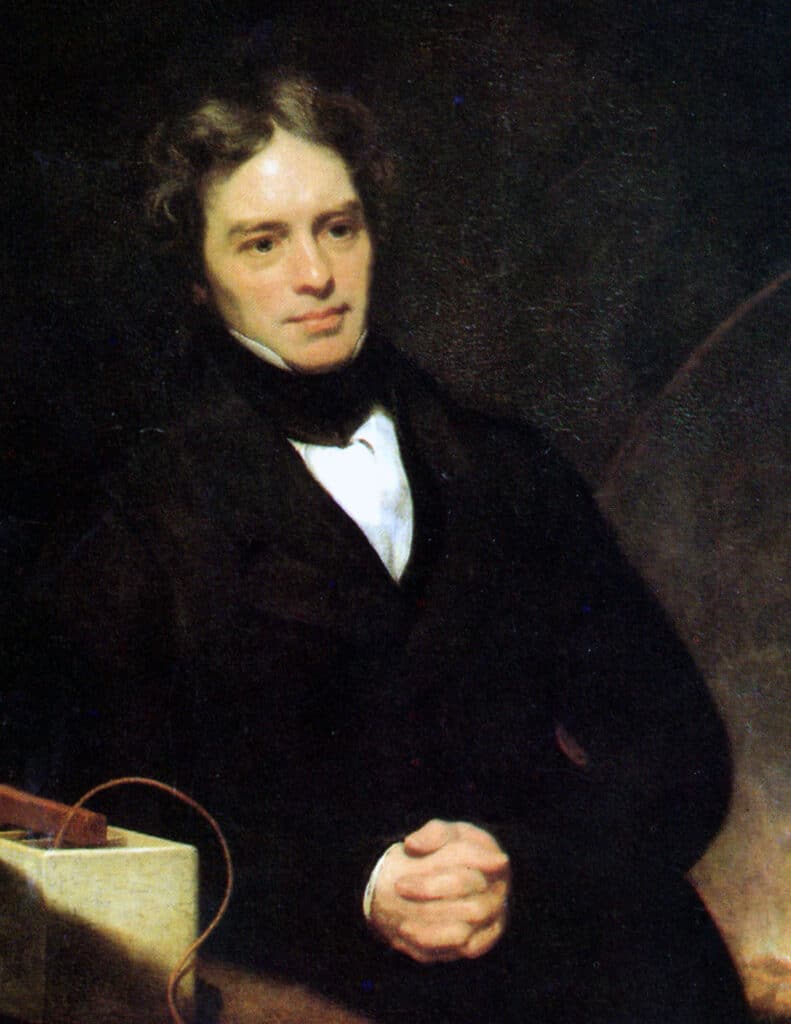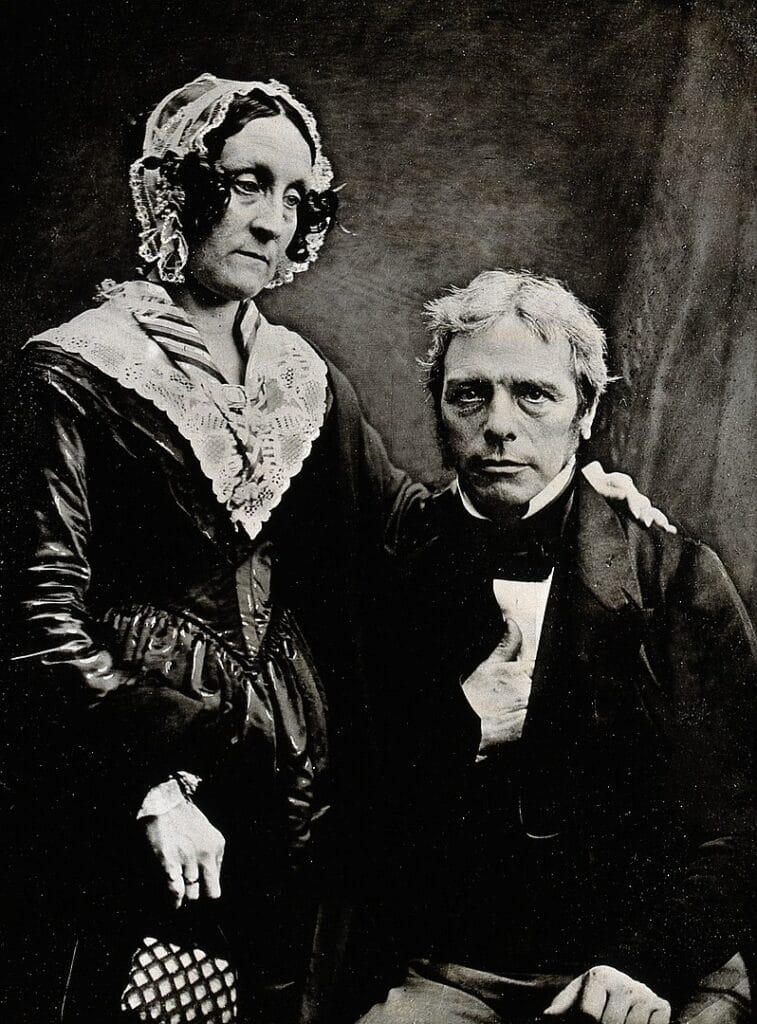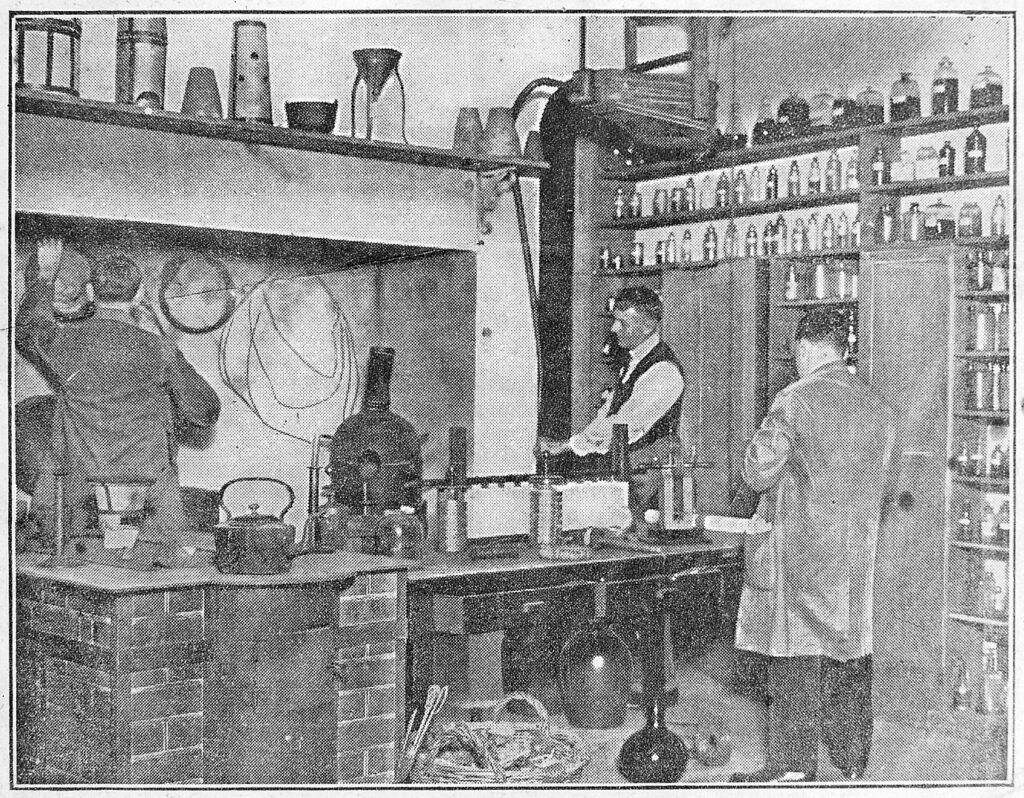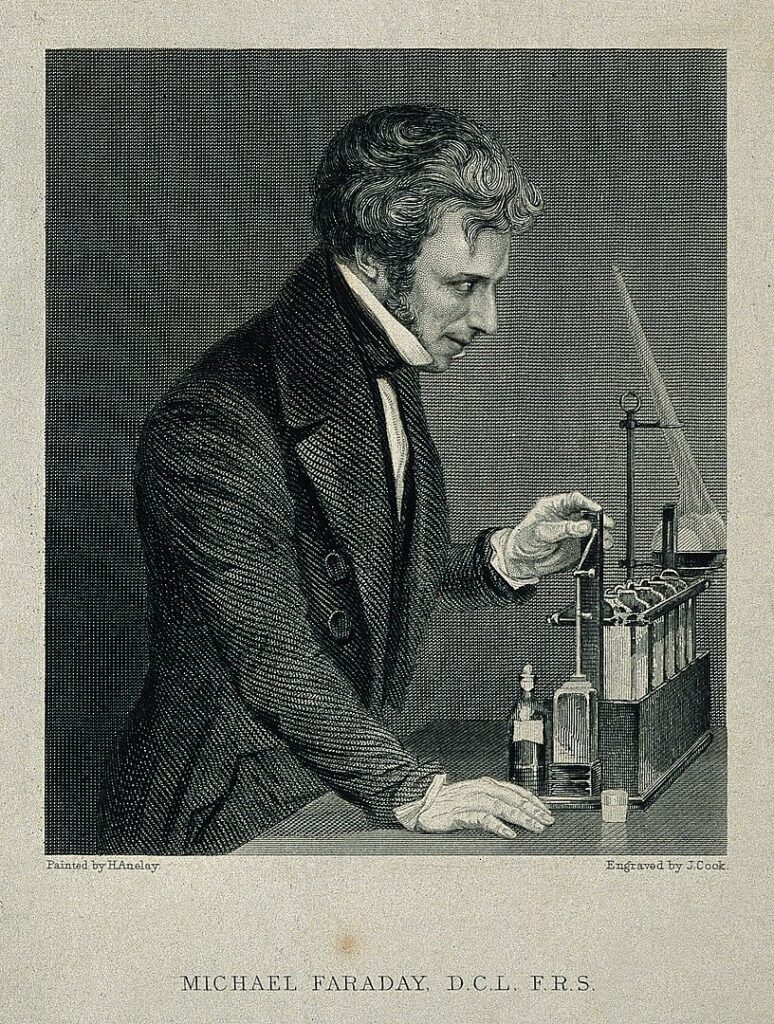What is the first name that comes to mind with the mention of electricity? Thomas Edison? Nikola Tesla? Perhaps even Benjamin Franklin. Yet Michael Faraday has every right to belong on that list, too, as it’s impossible to imagine a world without his contributions to science.
From chemistry to electricity, from theoretical science to practical experiments that revolutionized the world, Faraday’s contributions can’t be overstated. And there’s more to the story than just success; it’s also a poignant tale of how anyone — regardless of their background, their education, or their upbringing — can make a real impact.
Faraday started out as just an everyday sort of person, from a family that had no vast fortunes or resources. As a child, he often went to bed hungry. He had next to no formal education, and once he did get an apprenticeship in the subject that had sparked his curiosity and determination, he started at the absolute bottom. It’s a tale not just about science and discovery, but the power of grit and determination… and a man who, at the end of his life, wasn’t just remembered for his monumental advancements, but for his kindness as well.

A Single Loaf’s Salary
Little is known about Michael Faraday’s young life, growing up in the area of London now known as Elephant and Castle. The reason for that is simple: it wasn’t the sort of life anyone would really want to record, and his parents lived the sort of everyday existence that danced on the edge of abject poverty.
We do know that he was born on September 22, 1791, in Newington Butts — the aforementioned Elephant and Castle area of London. His father, James, was a blacksmith originally from Yorkshire, who moved to the south and ultimately married the daughter of a Surrey farmer. Our Faraday was one of four children, and life was difficult. His father was ill for much of his childhood, and that meant he wasn’t able to hold steady work. Oftentimes, he wasn’t able to do much to support his family.
Life was hard, and it was the sort of hardship that meant the family often went to bed hungry. In 1801, the family was actually awarded public relief — for the then nine-year-old Michael, that came in the form of a single loaf of bread per week.
But even in the hardest of times, families can sometimes find a way to make things work. For all the hardship, Faraday still grew up knowing a mother who loved him dearly, and it was during his childhood that he came to know what would be one of the biggest influences on his life — religion.
The Faraday family belonged to a small sect called the Sandemanians. They were an offshoot of the Christian faith, founded only about 70 years before Faraday was born. The sect — descended from the Scottish Glassites — believed that the Church should be beholden to no one and nothing but the original Apostolic doctrine. Their faith was one of a devout and quiet sort of piety, and they practiced things like a weekly celebration of the Lord’s Supper and feet washing ceremonies. Accumulating wealth was seen as immoral, and members were expected to share what they had with other Church members who were in need.

The sect had mostly selfless beliefs, but there’s a few things worth noting — particularly because Faraday’s identification with the Sandemanian sect is something we’re going to come back to later in his life. Among their beliefs was a strict refusal to pray alongside those of other faiths, even other Christians. Associating with those who had been excommunicated was a major sin.
But for now, during his childhood Faraday’s association with the Church was a pleasant one. He read aloud during Sunday School, he was an active member of the modest congregation, and it instilled a curiosity about the world around him.
Faraday was always a bright child, and while he once credited a day school with teaching him the basics of reading and writing, it’s arguable that his education truly began when he was 13 years old. That’s when he was sent to apprentice at perhaps the best place a curious young mind could find itself: a London bookbinding shop. Even though he started out simply as an errand boy, it wasn’t long before the bookbinder — a man named George Riebau — signed him on for an eight-year apprenticeship. And while he was there, he was doing much more than just running errands. He read each and every book they bound, including works like Jane Marcet’s Conversations in Chemistry and much of the Encyclopedia Britannica. It was the articles on science, force, and energy that particularly captivated the young Faraday, and opened up a whole new world that would quickly get even wider.
By 1810, Faraday had joined the City Philosophical Society, and in spite of the somewhat deceiving name, it was a society of young people who gathered on a weekly basis to listen to lectures on some of the most cutting-edge science of the day. Fast forward a bit to 1812, and this is when things really started to change. One of the bookbinder’s customers was William Dance, who was one of the founders of the Royal Philharmonic Society. He was the one who gave young Faraday four tickets — one to each of Humphry Davy’s last four lectures given at the Royal Institution.
And that was when he found a calling worth fighting for.
No one’s going to just hand you what you want…
By the time Faraday headed off to Davy’s lectures, he had already begun to experiment with what he read about in the books that had come through the little shop where he worked. He had already built his own electrostatic generator out of some wood and a few old bottles, and had dabbled in his own electrochemical experiments. When he listened to Davy’s lectures, he was captivated — so captivated, in fact, that he decided this was where he wanted to be.
And here’s the thing — there was no reason that Davy should have given him a second glance. He was largely self-educated, from a poor London family, and when push came to shove, he absolutely wasn’t the sort of person you’d expect to see accepted into a prestigious position in the scientific community. Still, you don’t get anywhere in life without putting yourself out there, and Faraday had the tools to do exactly that.
He took extremely detailed notes during Davy’s lectures, then headed back to his day job and turned those notes into a bound book, which he then sent to Davy — along with a rather brazen application for apprenticeship. How brazen was it? Davy was one of the leading chemists of his day, and when it comes to famous scientists through the lens of hindsight, he’s still up there.
By the time Faraday reached out to him, Davy had already been appointed to the Royal Institution as a regular lecturer, then ultimately, as a professor. He would turn it into a sort of advanced research center for some of the era’s brightest and most innovative minds, and he had a slew of credits to his name, too. Look back on his career today, and you’ll find it’s one full of impressive achievements — including the discovery of how to isolate sodium, potassium, calcium, and other alkaline earths. Additionally, and perhaps of note to those of us who loathe going to the dentist, he did extensive research on nitrous oxide. That’s better known as laughing gas today. Davy proposed using it as an anesthetic for minor surgeries, though his suggestion was, at the time, mostly ignored. Instead, it became the cool, fun thing to do at English parties.
Davy was at a point where he definitely could have just cast Faraday’s application aside without a second glance, but he didn’t — perhaps because he was, himself, a self-made scientist who grew up as the son of a poor Cornish woodcarver.
Davy had to turn him down, at first — there was simply no position open for him. But when one of Davy’s assistants was fired for fighting just a few months later, he reached out to Faraday and offered him the job.
Gainful Employment
Today, Faraday is remembered most for his work in electricity, but he didn’t start out there. When he started working with Davy in 1813, his official title was Chemical Assistant at the Royal Institution. That was in March; by the time October rolled around, he found himself embarking on a different sort of adventure… although “adventure” is probably being generous.
In October of 1813, Davy and Faraday set off to the continent. It was the chance of a lifetime, certainly, but there was a catch. The passports for the group had been issued by Napoleon, and he had made allowances for Davy, Davy’s wife, a maid, and a valet. Nowhere in that list is anything like “research assistant,” or even “secretary,” so it quickly became clear that if Faraday wanted to go, he was going to have to be a valet, too. The trip — which only ended in April of 1815 — led to some serious conflict within the group. Accounts suggest that Davy’s wife, Jane, insisted on treating Faraday only like a servant. He, of course, took great exception to the role, and it fell to Davy to keep the peace.

Regardless of the conflict, Faraday was exposed to some of the scientific world’s most cutting-edge research. In France, they saw chemists demonstrating the electrochemical nature of iodine, and in Italy, they got unprecedented access to the Duke of Tuscany’s great lens. There, they were able to take a diamond and turn it into carbon, which would probably be pretty awesome to witness even in our jaded, 21st-century world.
From there, it was on to Switzerland and into the south of Germany, but here’s where things get a little fuzzy. The trip was supposed to continue, but it didn’t — whether that was due to internal conflict or external affairs is unclear, but it was about then that they headed back to England and Faraday retired his valet’s jacket in favor of his original post as Chemical Assistant.
There, he was once again able to work on projects that more befitted his drive, including the Miner’s Safety Lamp — a project that ultimately resulted in a light source much less likely to ignite the methane gas commonly found in mines. He worked with others at the institute, too, including a maker of surgical instruments named James Stoddart. Together, they were trying to invent a way to improve the quality of steel.
And through it all, Faraday was still just an apprentice, remember. His apprenticeship didn’t end until 1820, and by the time it did come to an end, it was clear that Faraday was just as much an expert in the field of chemistry as Davy was. It came as no surprise when, in 1821, he was appointed Superintendent of the House at the Royal Institution. It was a position that saw him being put in charge of the physical buildings — a huge deal, considering that at the time, they housed some of the finest scientific research laboratories in Europe.
Powering Up
The year 1821 was an important one for Faraday — not only because of his new appointment with the Royal Institution, but also because he married Sarah Barnard. She, too, was a member of the Sandemanian faith, hailing from one of the church’s leading London families. Less than a month after they were married, Faraday performed his Confession of Faith and was welcomed into the church as a full-fledged member… which, again, might seem like a relatively minor detail, but one that we’ll come back to.
It was also in 1821 that he made a major scientific discovery; it’s not even an exaggeration to say that this one changed the world. It started when he read a paper by the Danish natural philosopher Hans Christian Oersted. He was writing about his discovery of this thing called “electro-magnetism,” but there was some difficulty in getting the theory across in a way that was easily understood. Since Oersted first wrote his paper in Latin before having it translated to various European languages, it didn’t quite capture all the nuances of his style, which was more naturally philosophical than nakedly scientific.
In fact, Faraday himself wrote, “I have very little to say on M. Oersted’s theory, for I must confess I do not quite understand it.”
Still, you might say that Oersted’s theory sparked something in Michael Faraday. Later that year, he had set up a surprisingly simple experiment at the Royal Institution that proved it was possible to use magnets to turn electricity into mechanical energy. The first surviving example of Faraday’s mechanism is one that he built in 1822, and it’s essentially a glass vessel partially filled with mercury. Ah, the good ol’ days.
It’s worth pointing out to anyone who might want to try this at home that we also need to say, “Do not try this at home.” Mercury is in the World Health Organization‘s top ten chemicals that are cause for a major health concern. It’s toxic when ingested or inhaled, so again… don’t try this.

As dangerous as mercury is, it’s also an excellent conductor, so it was perfect for Faraday’s experiments. He took this mercury-filled glass, secured a magnet to the bottom, and suspended a wire into it from above. An external battery sent a current into the wire, which created a magnetic field, interacted with the magnetic one, and caused the wire to spin.
It was the first electric motor, and if you stop to think about all the things that we rely on today — and have relied on for decades — that have electric motors, you’ll get some idea of just how monumental this discovery was. It also led Faraday down another path when it came to the theory of electricity: it made him contemplate the possibility that electricity wasn’t a fluid after all, like many believed at the time. He envisioned it as a force, or a vibration, something that was transmitted instead of being allowed to flow. And that breakthrough was a huge deal.
For the next two decades, Faraday worked at the Royal Institution and set up countless experiments. His work with electricity was on hiatus for much of the 1820s as he worked with the British Admiralty to design an improved optical glass, and it wasn’t until 1831 that he really got back to doing what the world needed him to do… they just didn’t know it yet.
His work on the theory of electrochemistry came in that same year, when he developed the ideas of electromagnetic induction, which would go on to become the basic principle that formed the groundwork of things like generators and electric transformers. He coined words we all heard in science classes, words like “ion,” “cathode,” and “electrode.”
It’s impossible to talk about all of his theories, discoveries, and advancements in such a short time, but there’s one more that’s definitely worth a mention — it came in 1836, and it’s the Faraday cage. You’ve probably heard of them in that aforementioned science class and you’ve probably seen one, but you might not realize just how important they are. The Faraday cage is fairly simple: it collects and distributes electrostatic charges across the exterior of the cage, protecting what’s in it.
Even if you’re only vaguely familiar with the idea, you’ve been inside Faraday cages a lot — both our cars and our aircraft are protected by Faraday cages, and while you might not worry to much about being struck by lightning while you’re driving along to Sunday dinner with the in-laws… in which case, you might be hoping for a little of that lightning… it’s a very real danger when you’re thousands of feet in the air.
Faraday cages are actually everywhere, and while yes, they are put in place on purpose to protect important things like top secret and proprietary information, there’s also one in your kitchen right now. The mesh that’s over the window in your microwave? That’s part of the Faraday cage that allows you to reheat your leftover pizza in complete safety by keeping most of the microwave radiation on the inside, so, like we said — it’s a big deal.
A temporary fall from grace
While Faraday was conducting — again, no pun intended, we promise! — his experiments, there was, of course, a lot going on in his everyday life… and this is where we go back to his faith.
In 1832, Faraday had been appointed to the Deacon’s office of his church, and it wasn’t long after that the continued strain of experiments, theories, writing, and lecturers took a toll on his health. It led to him stepping back a bit, and he did little work between 1839 and 1845.
In 1840, he was made an Elder in the church. It wasn’t just handed to him because of his scientific work, but because he was recognized as an upstanding and devout figure in the community. This makes Faraday something of an anomaly in the scientific community, because it’s well known that science and religion rarely go hand-in-hand. But Faraday firmly believed that not only should the Bible be taken literally — that God really did create everything in the natural world — but he also believed that the natural laws he was working with and exploring had been put in place by God.
By conducting his experiments and proving his theories, he truly thought he was getting closer to understanding God’s plan… or, at least the laws that God had put in place to keep the world running.

While it might seem that the Sandemanians would be grateful to have such a devout Elder in their church, it wasn’t without conflict. We mentioned that the traditions of the Sandemanians involved the observation of a weekly, Sunday supper — The Lord’s Supper. In 1844, Faraday missed one of those suppers, and wasn’t just removed from his position as an Elder, he was excommunicated for it.
He had an extremely good reason for missing the meal — Queen Victoria had invited him to be her personal, honored guest, and that’s just not the sort of thing you turn down. He was eventually welcomed back into the church, and in 1845 he once again picked up his scientific research. Much of his work was theoretical, exploring the unity of forces, but he also took on a fascinating — and massive — project: figuring out how to update and upgrade England’s lighthouses.
An estimated 10 percent of his correspondence involved this project, and he was the one who decided — after doing extensive testing himself — that Frederick Holmes’s suggestion of using a carbon arc lamp was the way to go. In 1858, the first electric lighthouse lit its beacon, thanks to Faraday’s work.
Between 1864 and 1866, London saw the construction of their only lighthouse. It stands on the intersection of the Thames and the River Lee, and it’s where Faraday oversaw the testing of new lighthouse technology. Even though there’s plenty of inventions we know him for today, there was only one patent he was ever awarded, and that was for a chimney that would be installed in lighthouses in order to prevent the combustion of gases. It was designed at the Docklands lighthouse, and it was Faraday who supervised the monumental task of electrifying all lighthouses.
Even the brightest lights begin to fade
By the time Faraday saw lighthouses converted to electric lamps, he already knew that his mind was beginning to fail him. By 1855, he had largely retired from experimental and theoretical work. His attempts at converting gravity into another force — as he had converted electrical energy into mechanical energy — had failed, and he refused to publish any of his work on the problem.
He was offered a knighthood but declined it, saying that he would be plain “Mr. Faraday” until he died, and this is a case where his refusals say just as much about his character as his achievement. He also declined an offer of the presidency of the Royal Society — twice — and also refused to work with the government when it came time to develop chemical weapons for the Crimean War. Those who wrote about him consistently wrote about a humble and kind person, who was more concerned with his faith and his science than with awards and accolades.
He did accept a small pension from the queen, and in 1851, census records showed him living at the place he had worked at for so long, the Royal Institution. In 1858, Queen Victoria also gave him the use of a Grace and Favor House, located in Hampton Court, as a thank-you for all he had done not just for science, but for the country. It was at this house that he died, in 1867. There was just a few thousand pounds that needed to be distributed through his will, and while he left most to his wife, he also left money to Miss Savage, “the valued and faithful Housekeeper of the Royal Institution,” and to his niece, Jane.
To the rest of us, he left quite a bit of wonderful wisdom, including this thought: “No matter what you look at, if you look at it closely enough, you are involved in the entire universe.”



